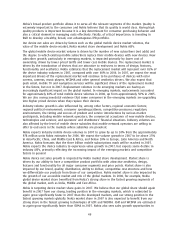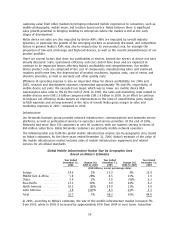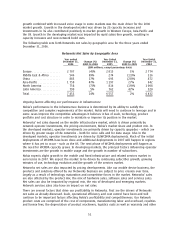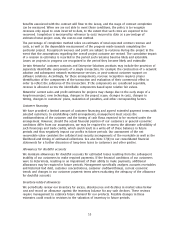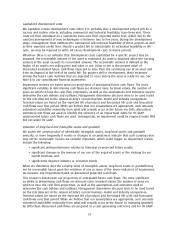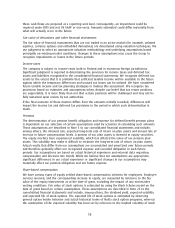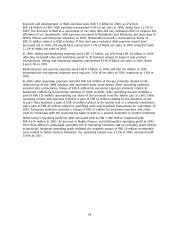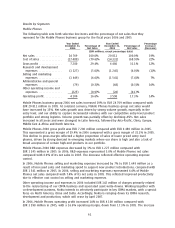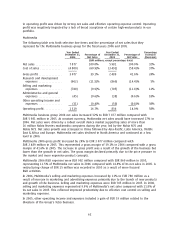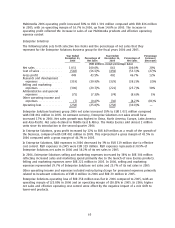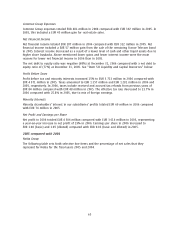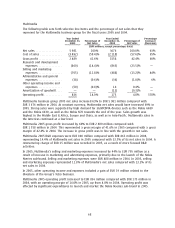Nokia 2006 Annual Report Download - page 59
Download and view the complete annual report
Please find page 59 of the 2006 Nokia annual report below. You can navigate through the pages in the report by either clicking on the pages listed below, or by using the keyword search tool below to find specific information within the annual report.these cash flows are prepared at a reporting unit level. Consequently, an impairment could be
required under IFRS and not US GAAP or vice versa. Amounts estimated could differ materially from
what will actually occur in the future.
Fair value of derivatives and other financial instruments
The fair value of financial instruments that are not traded in an active market (for example, unlisted
equities, currency options and embedded derivatives) are determined using valuation techniques. We
use judgment to select an appropriate valuation methodology and underlying assumptions based
principally on existing market conditions. Changes in these assumptions may cause the Group to
recognize impairments or losses in the future periods.
Income taxes
The company is subject to income taxes both in Finland and in numerous foreign jurisdictions.
Significant judgment is required in determining the provision for income taxes and deferred tax
assets and liabilities recognized in the consolidated financial statements. We recognize deferred tax
assets to the extent that it is probable that sufficient taxable income will be available in the future
against which the temporary differences and unused tax losses can be utilized. We have considered
future taxable income and tax planning strategies in making this assessment. We recognize tax
provisions based on estimates and assumptions when, despite our belief that tax return positions
are supportable, it is more likely than not that certain positions will be challenged and may not be
fully sustained upon review by tax authorities.
If the final outcome of these matters differs from the amounts initially recorded, differences will
impact the income tax and deferred tax provisions in the period in which such determination is
made.
Pensions
The determination of our pension benefit obligation and expense for defined benefit pension plans
is dependent on our selection of certain assumptions used by actuaries in calculating such amounts.
Those assumptions are described in Note 5 to our consolidated financial statements and include,
among others, the discount rate, expected longterm rate of return on plan assets and annual rate of
increase in future compensation levels. A portion of our plan assets is invested in equity securities.
The equity markets have experienced volatility, which has affected the value of our pension plan
assets. This volatility may make it difficult to estimate the longterm rate of return on plan assets.
Actual results that differ from our assumptions are accumulated and amortized over future periods
and therefore generally affect our recognized expense and recorded obligation in such future
periods. Our assumptions are based on actual historical experience and external data regarding
compensation and discount rate trends. While we believe that our assumptions are appropriate,
significant differences in our actual experience or significant changes in our assumptions may
materially affect our pension obligation and our future expense.
Sharebased compensation
We have various types of equity settled sharebased compensation schemes for employees. Employee
services received, and the corresponding increase in equity, are measured by reference to the fair
value of the equity instruments as at the date of grant, excluding the impact of any nonmarket
vesting conditions. Fair value of stock options is estimated by using the Black Scholes model on the
date of grant based on certain assumptions. Those assumptions are described in Note 23 to the
consolidated financial statements and include, among others, the dividend yield, expected volatility
and expected life of stock options. The expected life of stock options is estimated by observing
general option holder behavior and actual historical terms of Nokia stock option programs, whereas
the assumption of the expected volatility has been set by reference to the implied volatility of stock
58



